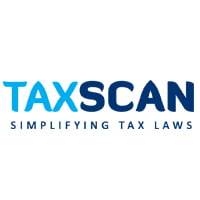Supreme Court elaborates on when the subsequent legislation be applied retrospectively [Read Judgment]
![Supreme Court elaborates on when the subsequent legislation be applied retrospectively [Read Judgment] Supreme Court elaborates on when the subsequent legislation be applied retrospectively [Read Judgment]](https://www.taxscan.in/wp-content/uploads/2020/09/Supreme-Court-legislation-Taxscan.jpg)
The Supreme Court held that for application of subsequent legislation retrospectively it is necessary to show that the previous legislation had any omission or ambiguity or it was intended to explain an earlier act.
The Appellant, M/s. L. R. Brothers Indo Flora Ltd. is a 100% Export Oriented Unit (EOU) engaged in production of cut flowers and flower buds of all kinds, suitable for bouquets and for ornamental purposes. The 100% EOU is required to export all articles produced by it.
As a consequence, it is exempted from payment of customs duty on the imported inputs used during production of the exported articles, vide Notification No. 126/94 Cus. Under the said notification, exemption on levy of customs duty had been extended even to the inputs used in production of articles sold in the domestic market, in accordance with the Export-Import (EXIM) Policy and subject to other conditions specified by the Development Commissioner.
Further, a subsequent Notification was issued which carried out amendments and substituting the charging clause of the inputs used in case of non excisable goods.
It was contended that amendment notification was retrospective in its application. Relying upon the CBEC Circular, the appellant contended that the Government intended to apply the notification retrospectively as it was brought in to address an anomaly, which existed vis a vis central excise notifications.
The Two judge bench of Justice AM Khanwilkar and Justice Dinesh Maheshwari while rejecting the claim of the appellant, the Court noticed that the Circular discusses the mechanism in force before the amendment, the reason for bringing in the change and the changes brought in. The circular does not mention that the earlier methodology in force was deficient or devoid of clarity in any manner. It rather says that the same was being disadvantageous to the EOU units as compared to the DTA units due to the difference in charging rates in the respective circulars.
“It is a settled proposition of law that all laws are deemed to apply prospectively unless either expressly specified to apply retrospectively or intended to have been done so by the legislature. The latter would be a case of necessary implication and it cannot be inferred lightly,” the court said.
The court further observed that merely because an anomaly has been addressed, it cannot be passed off as an error having been rectified. Unless shown otherwise, it has to be seen as a conscious change in the dispensation, particularly concerning the fiscal subject matters.
It was, hence, held that the said provision was not an error that crept in but was intentionally introduced by the Government to determine the charging rate, as discussed above. That being the position prior to the amendment, the amendment brought in cannot be said to be clarificatory in nature.


